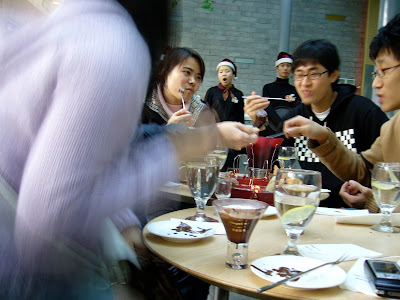
In connection with our robotic vacuum cleaner project, we worked on a long term project with the same client for a robotic lawn mower. In this project, ZJU was combining a number of its mechanical, electrical, robotic, and design teams with the engineers from the source company. That meant a few things but the biggest effect of working with such a large and specialized team was that our job as designers and thinkers was shown in full light. Sadly, most of the requirements of the finished product were predetermined so we did not get to go though a complete design process to find the consumer needs. Instead, we concentrated more on facilitating the work of the engineering team from an elemental design efficiency standpoint, as well as outward styling and communication with the client and various ZJU teams. In addition, Lab 318 and Lab 127 were providing the modelling as we had a few fulltime CATIA seats on our permanent team.
My role on this project was as a consultant to some of the aspects of the design team from Lab 318. Although I was not directly involved in the design, I aided in the design of algorithms for path finding.
This project is obviously quite large and many months by many people were spent on it so it was not worked on by the design team every day. However, it was really interesting to watch as over the months the product came together into firstly a finished concept, then a prototype and finally go preparation for manufacture. As my involvement was limited to research and some advising on certain aspects, I was not too worried about how things went on the project. Instead, when it was the center of every one's attention, I could watch closely in an effort to understand the subtleties of their immense pipeline and learn more about the Chinese design method.
After watching many meetings, of which I could only understand the drawings and 1 in 100 words, I found that in general their overall method is similar to that which we would discuss at RMIT. That said, their concept methods and development methods seem to be a bit different. For concept work, they would not research first then build a set of parameters and sketch around that idea. Instead, they would guess what they were making and do a lot of concept sketches, then build backwards to get a well designed set of interior workings. In the outward-in process, although they would ship some of the work to engineers, they would continue to work with the engineers quite closely. For this particular product, we used Lab 127 to house the prototyping and development sectors so when the mechanics were being ironed out, this lab contained a few ID people, a few engineers and a few CATIA modelers. They worked one-to-one to build the good practices and effective structural design into the shell that the design team had previously carved out. Once a mechanical system was decided upon, the files were sent off to a prototyping company (the same one I burnt my foot at, in fact) who returned a fully functional frame a week or so later. I do not know much about the early history of the electronic systems for this project, but once we had a base to work on there was a motherboard strapped to it and tests were being run to develop a home friendly and functional robot. As far as I know, this process is still underway.
Upon reflection on my encounter with this project, I think I have now seen a product go from a list of needs on a piece of paper to a nearly consumer-ready, autonomous disk that cuts grass and recharges itself. Details aside, the fact of watching a near complete product pipeline inclusive of virtually every respect of the final outcome was pretty impressive. Despite my small role in this project, I learnt a huge amount about what can be done with design. It seems the value of this education is the communication I can help people have.





